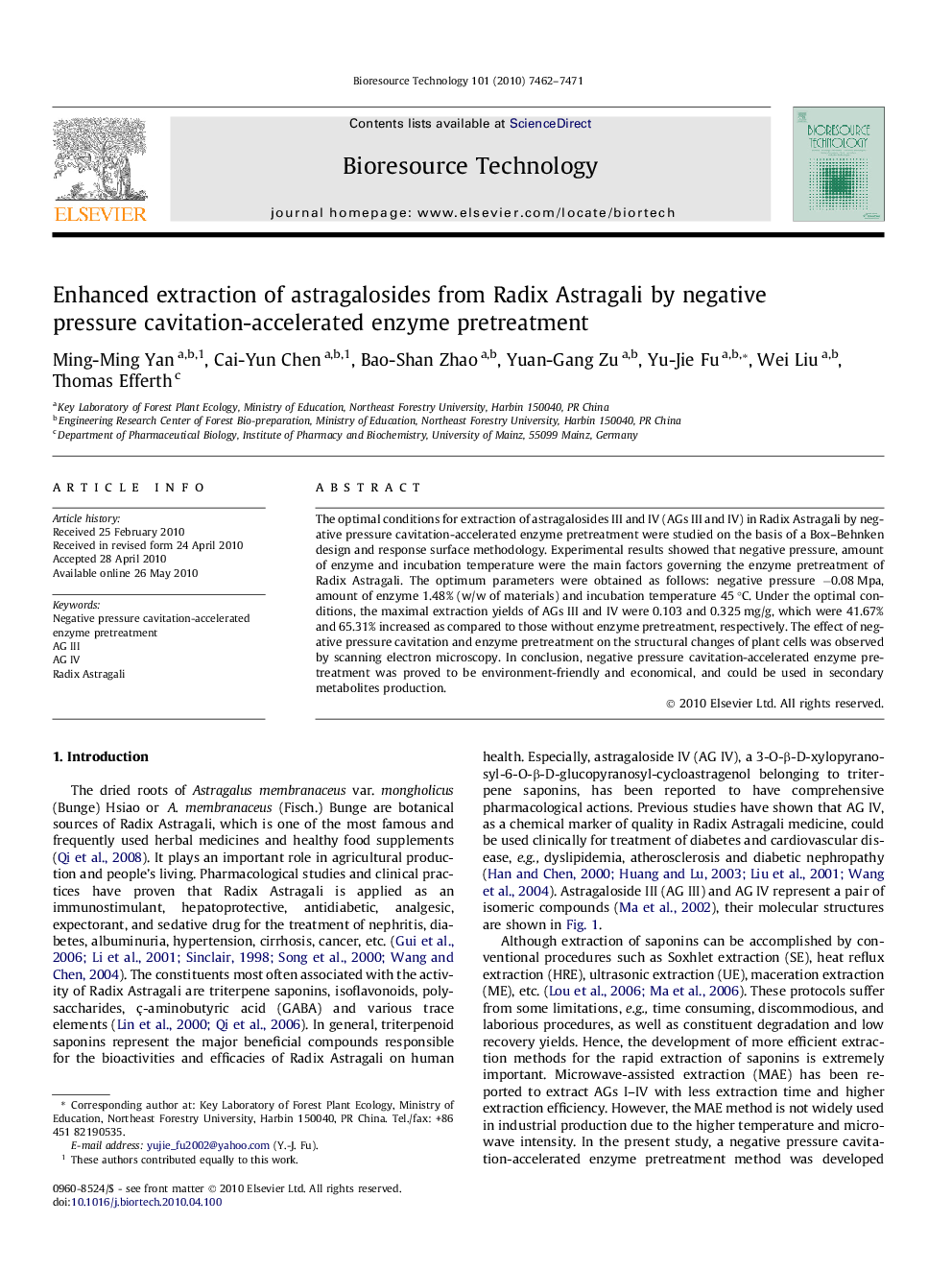| Article ID | Journal | Published Year | Pages | File Type |
|---|---|---|---|---|
| 682836 | Bioresource Technology | 2010 | 10 Pages |
The optimal conditions for extraction of astragalosides III and IV (AGs III and IV) in Radix Astragali by negative pressure cavitation-accelerated enzyme pretreatment were studied on the basis of a Box–Behnken design and response surface methodology. Experimental results showed that negative pressure, amount of enzyme and incubation temperature were the main factors governing the enzyme pretreatment of Radix Astragali. The optimum parameters were obtained as follows: negative pressure −0.08 Mpa, amount of enzyme 1.48% (w/w of materials) and incubation temperature 45 °C. Under the optimal conditions, the maximal extraction yields of AGs III and IV were 0.103 and 0.325 mg/g, which were 41.67% and 65.31% increased as compared to those without enzyme pretreatment, respectively. The effect of negative pressure cavitation and enzyme pretreatment on the structural changes of plant cells was observed by scanning electron microscopy. In conclusion, negative pressure cavitation-accelerated enzyme pretreatment was proved to be environment-friendly and economical, and could be used in secondary metabolites production.
